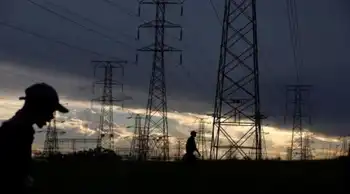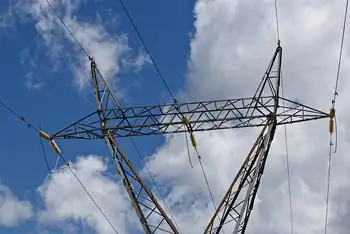Feds approve largest-ever solar project
BLYTHE, CALIFORNIA - The Obama administration has approved a thousand-megawatt solar project on federal land in southern California, the largest solar project ever planned on U.S. public lands.
Interior Secretary Ken Salazar hailed the $6 billion Blythe Solar Power Project, to be built in the Mojave Desert near Blythe, Calif., as the start of a boom in solar power on federal lands.
"Today is a day that makes me excited about the nation's future," Salazar said at a news conference. "This project shows in a real way how harnessing our own renewable resources can create good jobs here at home."
The Blythe project, being developed by Solar Millennium, a German solar developer, is slated for more than 7,000 acres of public land near the Arizona border, some 225 miles east of Los Angeles.
The project is the sixth solar power development approved by the Interior Department this month — all in California and Nevada. Approval of a seventh project — also in California — is expected in the next few weeks. All could start transmitting electricity by the end of 2011 or early 2012.
At full capacity, the seven projects would generate more than 3,000 megawatts of power and provide electricity for up to 2 million homes. The projects are expected to create more than 2,000 jobs during construction and several hundred permanent jobs.
A spokeswoman for the solar industry said the flurry of announcements shows that efforts made by the Obama administration and California Gov. Arnold Schwarzenegger to promote solar power are beginning to pay off.
"We're finally going to see solar energy produced on public lands in the United States — and this is something the public wants," said Monique Hanis, a spokeswoman for the Solar Energy Industries Association, a Washington-based trade group.
The announcements come about five years after solar developers began asking the Bureau of Land Management for rights to develop hundreds of solar plants on millions of acres of federally owned desert in the Southwest.
The bureau opened federally owned lands in 2005 to solar development, but an examination of records and interviews of officials by The Associated Press showed the program operated a first-come, first-served leasing system that quickly overwhelmed its small staff and enabled companies, regardless of solar industry experience, to squat on land without any real plans to develop it.
To expedite environmental review and bureaucratic red tape, the Interior Department identified 14 of the most promising solar projects among the more than 180 current permit applications covering about 23 million acres of federally owned desert in the Southwest.
Those 14 "fast-track" projects alone would produce more than 6,000 megawatts, enough to power 4 million homes for a day at peak usage, officials said.
Hanis, the industry representative, said that even after the 14 fast-track projects are approved, solar energy will remain a tiny fraction of overall energy production on U.S. lands. The projects approved this month are the first ever approved by the land management bureau, compared with more than 74,000 oil and gas permits issued in the past two decades.
Final approval by the end of the year qualifies the solar projects for federal funds under the economic stimulus law approved last year. Solar Millennium is eligible to secure $1.9 billion in conditional loan guarantees from the Energy Department for the Blythe project.
The company will be required to mitigate the project's effect on more than 8,000 acres of habitat for the desert tortoise, western burrowing owl, bighorn sheep and Mojave fringe-toed lizard, as part of an agreement with federal officials.
Related News

Pennsylvania Home to the First 100% Solar, Marriott-Branded U.S. Hotel
LANCASTER, PA - High Hotels Ltd., a hotel developer and operator, recently announced it is installing a $1.5 million solar array that will generate 100% of the electrical power required to operate one of its existing hotels in Greenfield Corporate Center. The completed installation will make the 133-room Courtyard by Marriott-Lancaster the first Marriott-branded hotel in the United States with 100% of its electricity needs generated from solar power. It is also believed to be the first solar array in the country installed for the sole purpose of generating 100% of the electricity needs of a hotel.
“This is an exciting…




